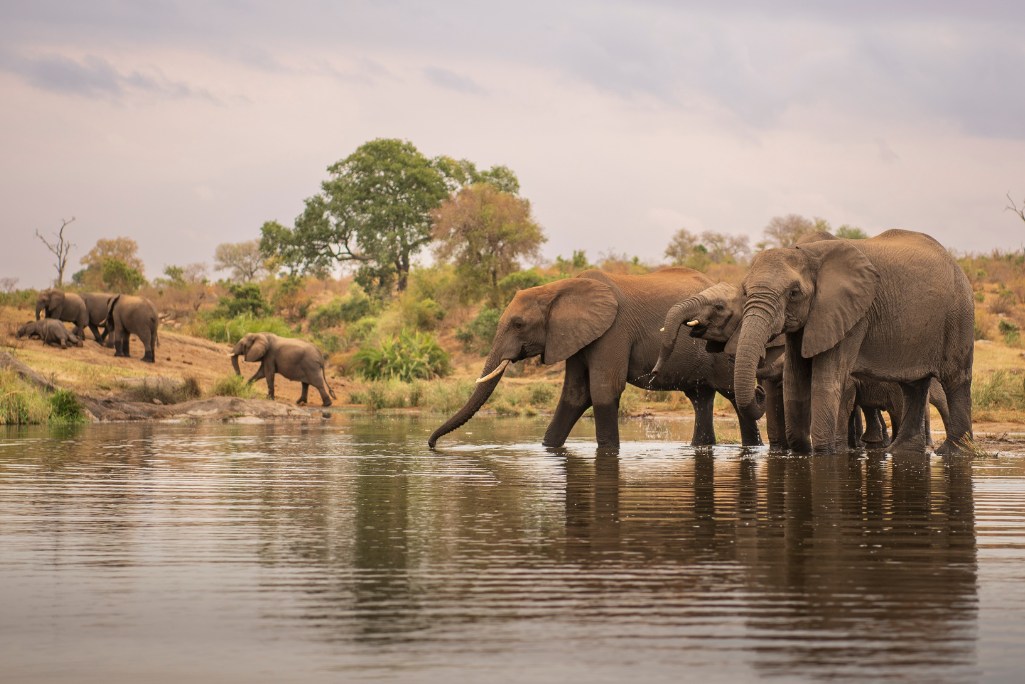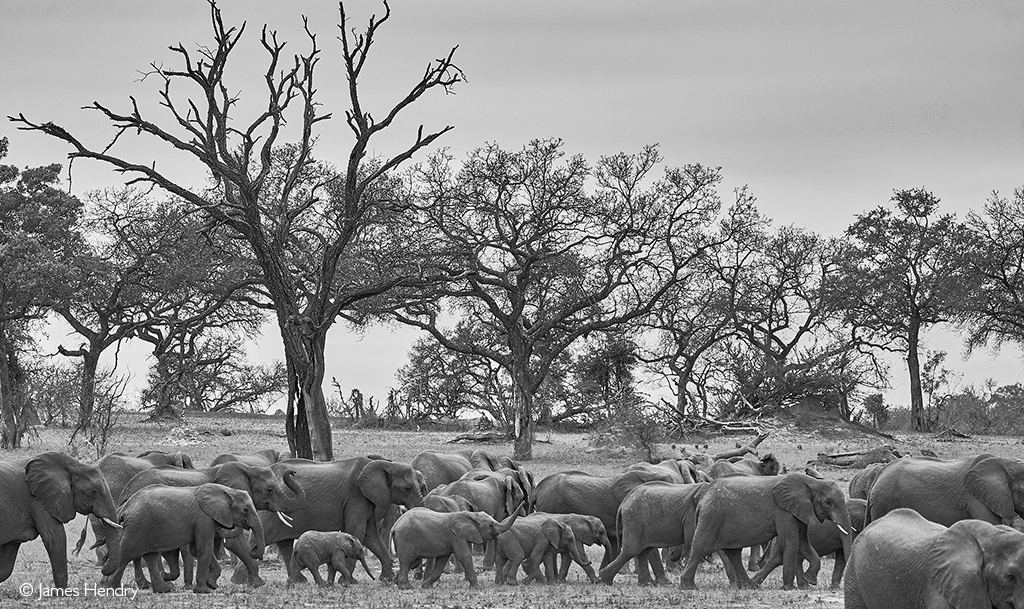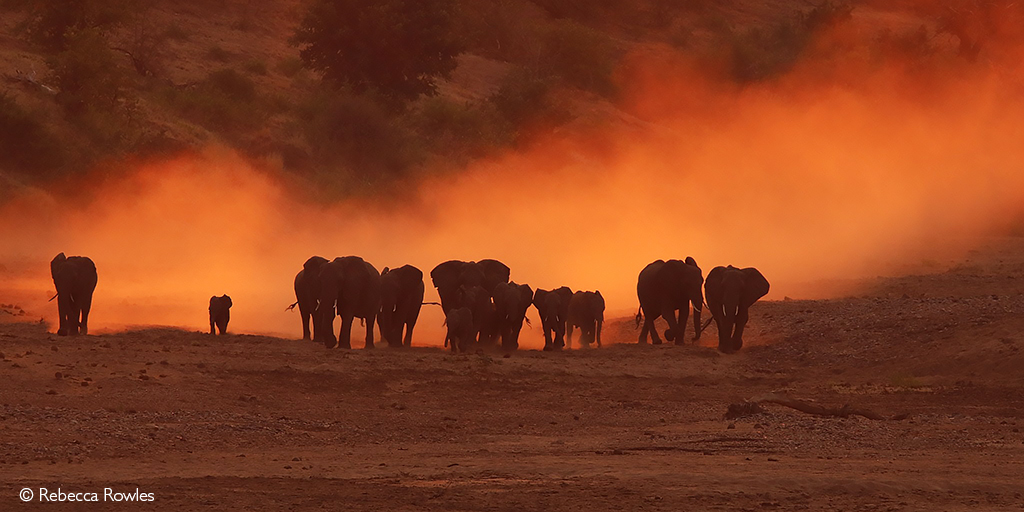Dr Sam Ferreira - South African National Parks | 23.01.2025
What the Research Says About Elephant Numbers

All we know is that change is certain, and elephants have and will continue to change the ecosystems in which they occur even after we have gone. Photo: Rudi van Aarde
So, how many elephants is too many elephants? It’s a question people have wrestled with for ages. Kruger National Park, home to one of Africa’s largest elephant populations, has seen their numbers grow from just a handful in the early 1900s to over 31,000 by 2020. That’s a lot of elephants! A recent study using smarter aerial surveys and fancy math gives us a more clear picture of just how fast these gentle giants are multiplying. Turns out, since 2013, their numbers have been growing by about 5.3% each year.
But here’s the twist: counting elephants isn’t as simple as flying over the park and tallying them. Old methods often missed a lot—thanks to things like human error or elephants being hard to spot from the air. This new approach combines traditional counts with statistical adjustments, and in 2020, scientists estimated 31,324 elephants (give or take a few thousand).
Is this a conservation success story? Absolutely! But it also comes with challenges. For some people, more elephants mean more pressure on Kruger’s trees, water, and other animals. Still, the study points out that the number of elephants isn’t the whole story—it’s what they’re doing, where they’re hanging out, and how long they’re sticking around that really matters.
Jumbo Impact: How Elephants Build Resilient Ecosystems
Elephants are like nature’s architects—but sometimes they double as demolition crews. For thousands of years, they’ve shaped the land with their tree-pushing, seed-spreading habits. But human activities disrupted these natural rhythms by breaking up habitats. By the 20th century, conservation efforts brought elephants back to Kruger. Great news, right? Well, managing their growing influences on the park has been a big task ever since.
Elephants are key players in the ecosystem. They open dense areas, spread seeds, and even help combat climate change. But let’s be honest: they can also cause some trouble, like knocking down too many trees in delicate spots. It’s all about the rhythm of nature—because let’s be honest, elephants aren’t out here trying to throw a wild party! They’re just going where there is sufficient water, food, and shade like the rest of us would.
Why Resources Matter
Here’s the deal: elephants love waterholes. During dry seasons, they crowd around these spots, munching on nearby trees and plants. In wetter months, they spread out, giving the land a break. That natural rhythm keeps ecosystems healthy.
But when humans step in—say, by creating artificial waterholes—things can go a little sideways. Too many elephants in one spot all the time can damage the vegetation and soil over time. Kruger learned this lesson the hard way. Now, they’ve removed many artificial water points, letting elephants move more naturally and keeping their impact in check.
The “Golden Era” Myth
Some people look back at the 1960s-90s as the “golden age” of conservation when everything was perfectly managed. But was it really? Back then, methods like culling (reducing populations) and controlled burning sometimes caused more harm than good. Population numbers of other animals, like zebra and antelope, dropped significantly.
Today, Kruger takes a more thoughtful approach. Instead of micromanaging elephants, they aim to manage towards a healthy ecosystem where all species can thrive.
Are Elephants Really Wrecking Kruger? Not So Fast!
Saying that 30,000 elephants are destroying Kruger is like blaming a bee for ruining a garden. It’s not that simple. Elephants go where the resources are. When there’s plenty of water and food, they stick around, snack on trees, and yes, sometimes knock a few over. But when resources shift, so do the elephants.
The real question isn’t “How many elephants are too many?” but rather, “Why are they staying in one place for so long?” For example, artificial waterholes can turn quiet groves into elephant party zones, while droughts or greener pastures elsewhere also influence their movements.
Humans and Elephants: An Old Dance
Two hundred years ago, Kruger was the place for elephants. But by the late 1800s, hunting and human expansion nearly wiped them out. By 1900, there were zero elephants in the park! During this low-elephant era, trees grew tall and dense—the very landscapes some people now see as “natural.”
Here’s a fun fact: back in the day, humans unintentionally managed elephants by creating areas of danger and safety. Villages, hunting grounds, and mining sites kept elephants away from certain spots, letting the land recover. It’s a neat reminder that humans and elephants have been influencing each other’s movements for centuries.
A Smarter Way Forward: Adaptive Management
So, what’s the solution? It’s not about forcing a decrease in elephant numbers or letting them grow wild. Instead, Kruger focuses on “adaptive management,” which means solving specific problems as they come up. For instance, if elephants are overusing a sensitive area, they might close nearby waterholes or set up temporary ranger posts to encourage the elephants to move elsewhere.
It’s not a one-size-fits-all solution—it’s a smarter, more flexible way to work with nature. After all, elephants are not destructive bulldozers. They’re ecosystem engineers who play a complex and important role in the environment.
The Takeaway: It’s More Than Just Numbers
At the end of the day, elephants aren’t just numbers on a chart. They’re living, breathing creatures with behaviours that are deeply connected to the world around them. Managing their population isn’t about finding a magical number. It’s about understanding their impact, learning from history, and making thoughtful decisions.
Kruger’s elephants show us that conservation isn’t a formula—it’s a dance. A dance between science, history, and nature itself. The real question isn’t just how many elephants Kruger can handle—it’s how we, as caretakers of this planet, choose to live alongside these amazing animals.
Listen to an interview explaining nuances about elephants in Kruger:
https://www.conservationaction.co.za/ou ... uger-park/
Source: https://www.sanparks.org/conservation/s ... -in-kruger






